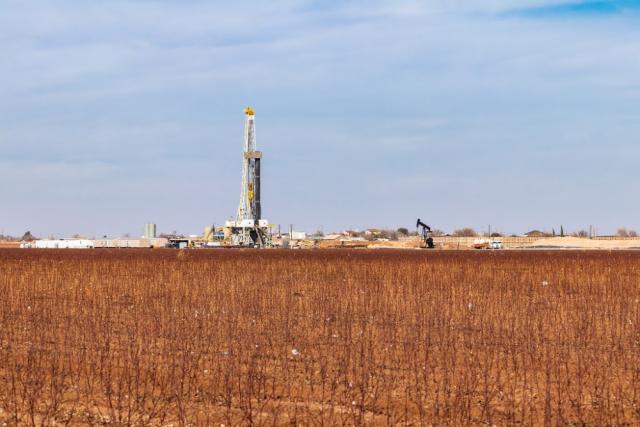
(Source: GB Hart/Shutterstock.com)
Steps taken a few years ago by Chevron Corp. to investigate inconsistencies in the company’s Permian Basin operations led to standardized operating procedures and a digital leap that ultimately moved its directional drillers from rig sites to a remote center.
Flash forward to today and the company is running 100% of its drilling operations in the Permian Basin from its remote operations center in Houston and seeing benefits, according to Kelsey Prestidge, performance drilling engineer for Chevron. These have included improvements in rate of penetration, cycle times and lessons learned being shared across different parts of the basin.
“You have directional drillers all sitting together in the same room talking about different ideas, what they’ve seen in the past and sharing that knowledge,” Kelsey said during a recent Upstream Intelligence by Reuters Event webinar about automating decision-making in directional drilling. “We’re expecting to see more and more improvements especially as we grow as a remote center in learning how to optimize what we’re doing, working with our business partners to understand where their limitations are now and how we can go in with laser focus to address those issues and help them get better.”
The company also is on a mission to produce 900,000 barrels of oil per day in the Permian’s Midland and Delaware sub-basins by the end of 2023. The ramp-up in production comes as some oil and gas companies, including independent E&Ps, carry out plans to spend less money overall on new drilling while working to produce better returns for shareholders.
However, continued optimization and improved efficiency remains at the forefront for shale players, including Chevron, which is using a factory approach for accelerated development in the Permian Basin.
Speaking during the webinar, which also featured Dingzhou Cao, a data science manager for WPX Energy Inc., Prestidge said Chevron has a few rover teams set up throughout the field for support. Their responsibilities include picking up and laying down bottomhole assemblies, for example, troubleshooting and mentoring new field personnel. Communication from the field to the center involves use of what Prestidge described as a walkie-talkie type system along with chat features so everyone is aware of what is happening.
The transition of directional drillers to remote centers—a move also made by Hess Corp. a few years ago—involved improved workflows and communication along with ditching the “I don’t like change” mentality and getting a ton of feedback from everyone involved.
“The one thing that made us really successful as a team was we were very collaborative,” she added. “We also had the same ‘why,’ and our team was empowered …[by] our leadership team to make remote directional drilling successful. We weren’t afraid to fail.”
In the remote center, Chevron has pods—one each for directional drilling, MWD and geosteering—centrally located so they are in constant communication about what’s happening, what’s not working and what needs to change. Before, the teams were all in different locations communicating back and forth via email, operating in silos and making decisions based on information they had at hand.
The company has seen significant improvement in communication and increased collaboration between teams as well as improved asset development, Prestidge said.
Still, there are challenges and opportunities that come along with supporting drilling operations remotely using real-time data.
Cao, who worked for Anadarko Petroleum Corp. before its acquisition by Occidental Petroleum Corp., touched on data automation and real-time measurements and pointed out challenges can arise if involved parties don’t have software packages from the same company.
“If you can build something internally, you can customize it to automate the workflow,” he said.
Another challenge is getting different data systems used by different companies working on the same development to interface. Solving challenges such as these could improve the data-driven decision-making process when it comes to use of data analytics, including in real-time.
Recommended Reading
Deep Well Services, CNX Launch JV AutoSep Technologies
2024-04-25 - AutoSep Technologies, a joint venture between Deep Well Services and CNX Resources, will provide automated conventional flowback operations to the oil and gas industry.
EQT Sees Clear Path to $5B in Potential Divestments
2024-04-24 - EQT Corp. executives said that an April deal with Equinor has been a catalyst for talks with potential buyers as the company looks to shed debt for its Equitrans Midstream acquisition.
Matador Hoards Dry Powder for Potential M&A, Adds Delaware Acreage
2024-04-24 - Delaware-focused E&P Matador Resources is growing oil production, expanding midstream capacity, keeping debt low and hunting for M&A opportunities.
TotalEnergies, Vanguard Renewables Form RNG JV in US
2024-04-24 - Total Energies and Vanguard Renewable’s equally owned joint venture initially aims to advance 10 RNG projects into construction during the next 12 months.
Ithaca Energy to Buy Eni's UK Assets in $938MM North Sea Deal
2024-04-23 - Eni, one of Italy's biggest energy companies, will transfer its U.K. business in exchange for 38.5% of Ithaca's share capital, while the existing Ithaca Energy shareholders will own the remaining 61.5% of the combined group.





